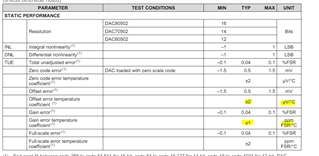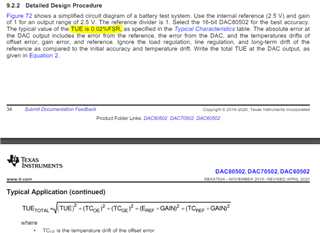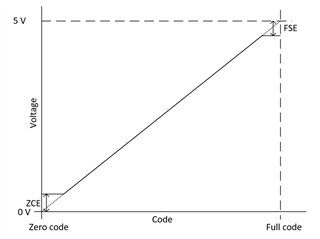Tool/software:
Hi,
Let me ask you a basic question as below about TUE.
Q1) TUE of page 5 datasheet
Will you tell me what does it mean?
The "TUE" includes any other factors (Offset, Gain, etc) ?
Q2) Datasheet page 35
I suppose that 0.112%FSR(before calibration) is from "equation 2" and 0.05%FSR(after calibration) is from "equation 5".
Will you teach me how to calculate the value?
Which data should I use to calculate it?
Will you tell me how to calculate with concreat value?
Thank you for your support.
Best Regards,
Takumi




